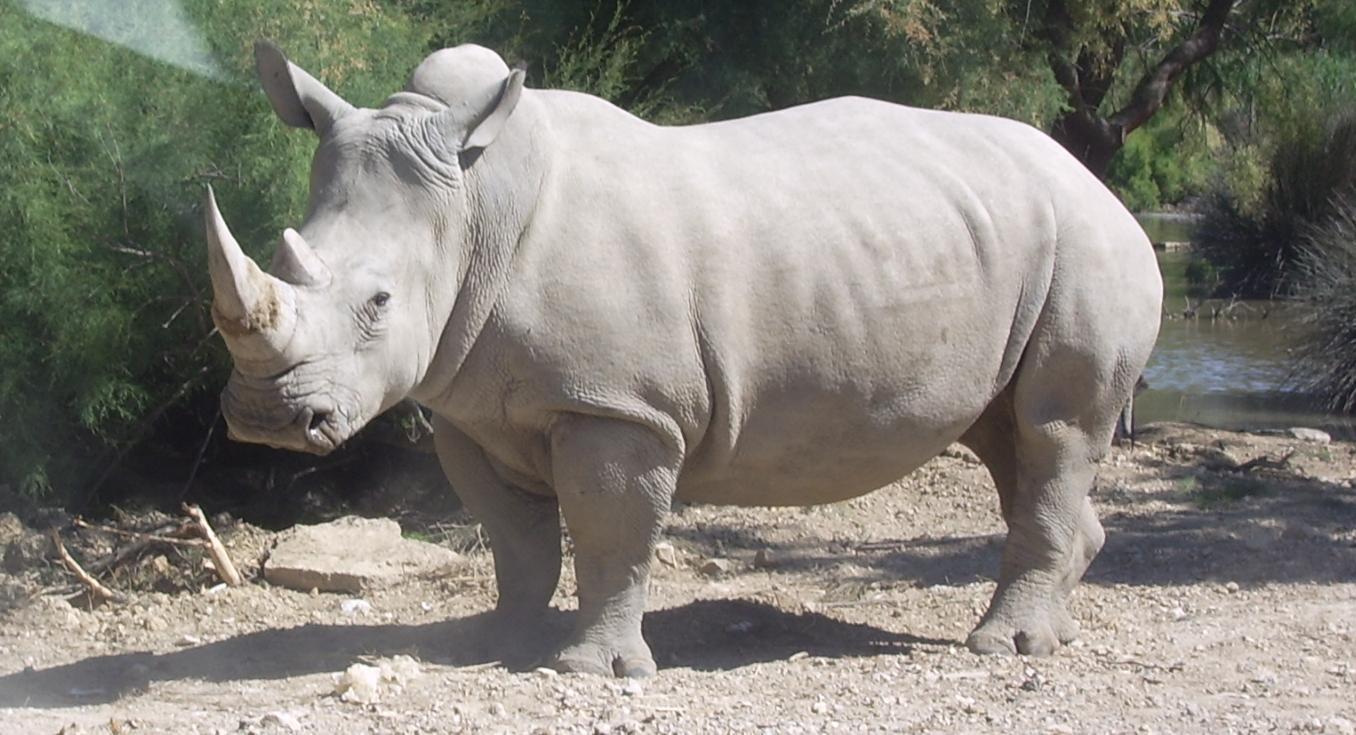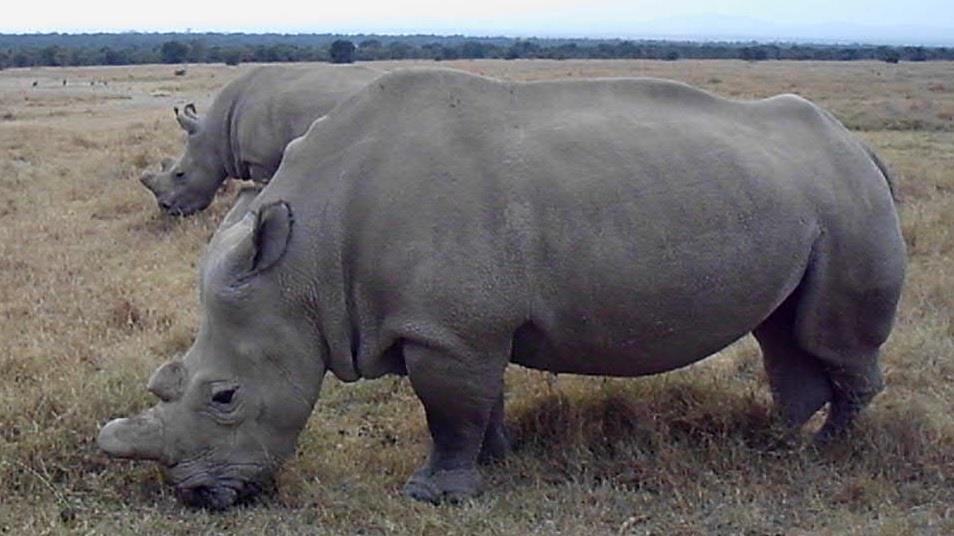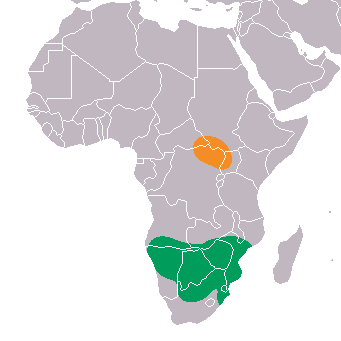A 34-year-old male northern white rhino has died in a wildlife conservancy in Kenya, leaving only six northern white rhinos left in the world. Ari Phillips, writing for thinkprogress.org (“Death of Northern White Rhino Leaves Only Six Left In Existence,” October 19, 2014), goes on to say: “Suni, one of four northern white rhinos living in the Ol Pejeta Conservancy, was the first-ever northern white rhino to be born in captivity. He arrived at the conservancy in 2009 from Dvůr Králové Zoo in Czech Republic as part of a breeding program along with another male and two females.
The cause of his death is yet to be determined. His father Saút died in 2006 of natural causes at the same age as Suni. No northern white rhinos are known to have survived in the wild, and Suni was one of the last two breeding males in the world leaving the future of his species in serious doubt.
‘The species now stands at the brink of complete extinction, a sorry testament to the greed of the human race,’ said the conservancy in a statement. The conservancy will continue to work towards breeding a northern white rhino calf. In 2012, Suni entered a courtship ritual and mated with another northern white rhino named Najin, however the mating did not result in a pregnancy.
The northern white rhino is the world’s rarest large mammal. While it is often considered one of two subspecies of white rhinoceros — the southern white rhino being the other — recent research has found that the northern white rhino may indeed be a distinct species. Having once ranged across Southern Africa, southern white rhinos were considered extinct in the late 19th century. Then in 1895, a small population of less than 100 individuals was discovered in South Africa. Now there are about 20,000 southern white rhinos living protected areas, making them the only non-endangered rhino.
Formerly found in several countries in East and Central Africa south of the Sahara, the northern white rhino was decimated by poaching, with their wild population reduced from around 500 to 15 in the 1970s and 1980s. In Asia, rhino horn was used as a traditional medicine and is often now used as a status symbol of success, especially in Vietnam. It can sell for more than gold or platinum.
According to a recent report from the World Wildlife Fund and the Zoological Society of London, the Earth has lost half its vertebrate species — mammals, birds, fish, reptiles, and amphibians — since 1970. The report found that the worst declines of animal populations have occurred among developing, low-income nations. About seven percent of the overall decline could be attributed to climate change, according to the report, with over one-third due to exploitation such as poaching, while most of the rest was due to habitat alteration, degradation, or loss.




